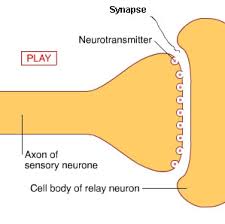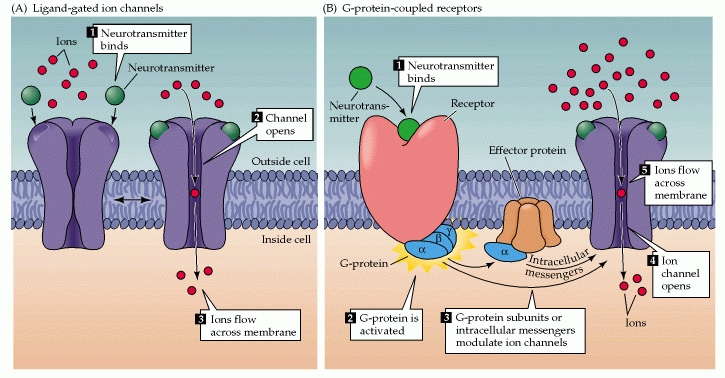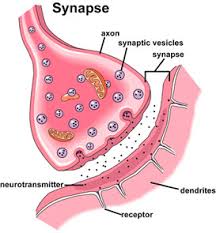In a neural pathway, a synapse is what?
2 Answers
The gap between neurons.
Explanation:
The synapse is the physical gap between neuron cells that passes the electrical charges involved in our thought processes and autonomic functions.
Details and nice graphic here:
https://en.wikipedia.org/wiki/Synapse
A tiny gap between neurons that chemicals diffuse across.
Explanation:
Between two neurons (the cell body or dendrite of one neuron and axons of the other) is a tiny gap. This gap, the synapse, is where chemical messages (or rather, neurotransmitters) diffuse across.

At a synapse, there is a fluid filled gap (a synaptic cleft) about 25 nanometers (a billionth of a meter) wide. There are also receptors on the cell's membrane which neurotransmitters slot into. By slotting in, they change the shape of an ion channel which allows ions (charged particles) to pass across the membrane and triggers an electrical impulse.
So, to break it down into steps:
1 - An action potential (electrical signal) travels through the neuron sending the message until it reaches the synapse.
2 - The vesicles fuse with the cell membrane and release neurotransmitters.
3 - These neurotransmitters then slot into the receptor site on an ion channel.

4 - This causes the channel to change shape and allow ions to cross across the receiving neuron's membrane.
5 - These ions then trigger an action potential in the receiving cell.
! Note that the neurotransmitters are then returned to the original cell through reuptake. !

The neurotransmitters travel in synaptic vesicles - little packages that fuse with the cell membrane when an impulse arrives then releases the neurotransmitters inside. These vesicles are in turn delivered via a neurotubule.
Finally, here is a great little video to further explain anything:
Hope this helps, let me know if I can do anything else:)
Edit - Here are the sources of my information (requested by SCooke)
The Human Body Book" by Robert Winston
"BMA A-Z Family Medical Encyclopedia" (No specific author associated but it is a Doring and Kinsley book)
Websites that I used include
http://www.nimh.nih.gov/
http://www.minddisorders.com/
http://allpsych.com/
http://www.wisegeek.com/
The video came from Crash Course on Youtube
I have also used some information from wikipedia (synapse and reuptake page), but only after cross referencing it.
A lot of the information I cannot cite as I have learnt it through classes, lectures and talking to my medical family.
No information was copied, and it has all been written in my own words to ensure easy comprehension.

